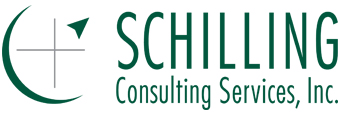Getting the Most Out of Capital – Part 1: Risk & Opportunity
What’s that old saying…the Chinese word for Crisis (Wei Ji) is a blend of Danger (Wei) and Opportunity (Ji)? While the truth in this literal translation is debatable at best, the concept has endured since the 1960s, probably because many have found it to hold elements of truth.
The “Dangers” of Tight Capital Emerging from Covid19, inarguably a major crisis, many organizations found capital scarce, in part because lower margins during the pandemic resulted in lower (or no) funding of capital pools. While there has been some improvement in margins for the industry as a whole in recent months, they may be slowing to a new normal.1 And, the improvements have varied significantly across hospitals. Sustained profitability is a delicate balancing act. Funding for capital investments is still limited.
Lower margins usually translate to less capital to allocate to potential projects, and with lower margins, there is less ability to compensate for lower-than-expected returns, so the risks associated with any underperforming or failed projects are much higher. This clearly resonates with the “danger” part of the crisis definition.
The Post-Covid Opportunity In true fashion regarding the other half of the crisis definition, many health and human service organizations found the Covid19 peak years to be a period of opportunity, in part because it required substantial innovation to respond effectively to the scope and depth of human need. Responding to the Pandemic accelerated the pace of many innovations (e.g. tele-medicine, working remotely) and initiated others (e.g. supply chain improvements). Furthermore, the pace of innovation seems to be continuing, inspiring as many proposals for capital investment as ever…maybe more. Many of these innovations require substantial funding, including shifting care to new settings, leveraging technology, and workspace redesign.
The Dilemma of an Era of Tight Capital When viewed in this way, the Crisis of Covid19 Pandemic indeed meant both danger and opportunity for capital investment. If these conditions persist, at least into the foreseeable future, how do leadership teams select the “best” projects to fund with limited capital from a large number of potential “game changers?” This series explores how to get the most out of capital investments in a period where capital is tight, and risks are high.
Selecting the Best In the next three posts, we will cover four key characteristics, and a few useful tools, for selecting the capital investments most likely to succeed. Your organization may have already established criteria for evaluating various capital requests. However, in the current environment the focus needs to sharpen on investments that will balance a rapid rate of return with other important considerations. We will review considerations that help ensure both sustainability and also synergy with the evolving US health care landscape in future posts.
Ensuring Success Then, in two additional posts, we will cover six important considerations, and the associated steps you can take to help ensure the success of the investments that you choose. Selecting the capital investment opportunities that best fit your criteria is still no guarantee of success, especially in this transformative period. Societal pressures, evolving consumer expectations, and technological and clinical advancements result in a dynamic environment. However, there are ways to foresee, or at least minimize the impact of, potential disruptors, and enhance the resiliency and impact of your project.
Are you and your leadership team prepared to get the most out of your capital investments? Let us know if you have any additional thoughts as this series unfolds, or if we can be of any help applying these ideas in your capital project review, selection, and implementation processes.
Roberta Jelinek and Jeff Schilling
(This is the 1st of 7 posts in the series. For the full article, contact either one of us.)
1 April, 2024 edition of Kaufman Hall’s National Hospital Flash Report.

Leave a Reply
Want to join the discussion?Feel free to contribute!